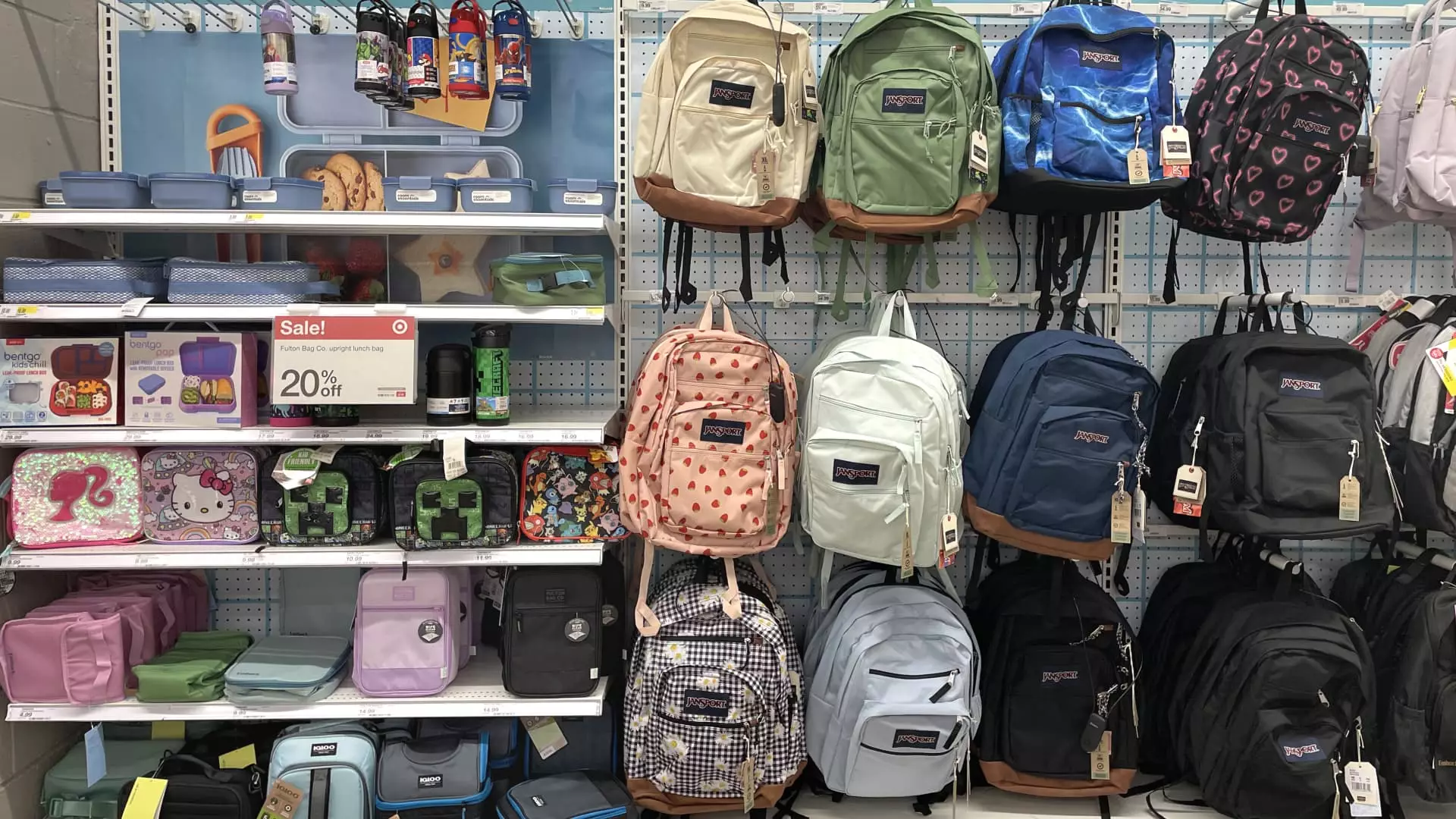In recent years, the American landscape of back-to-school shopping has transformed from a routine activity into a source of mounting financial stress for families. Traditionally viewed as a necessary annual expense, the costs associated with supplies, clothing, and electronics are now heightened by broader economic pressures. Inflation, which has stubbornly persisted across multiple sectors, directly inflates the price tags on the very items parents need to prepare their children for the upcoming academic year. The problem deepens when policy decisions, particularly tariffs imposed on international trade, further distort pricing mechanisms, complicating families’ ability to plan and budget effectively.
The latest data underscores a concerning trend: a significant portion of American households—roughly 20%—are experiencing their budgets strained by back-to-school costs. Meanwhile, nearly 40% report being unable to afford these essentials outright, forcing many to consider taking on debt just to keep their children adequately equipped. This situation signals not merely a temporary inconvenience but hints at a systemic issue that could have long-term repercussions for economic stability and social equity. When families are pushed to borrow or cut corners, it reveals a fragile economic foundation that’s increasingly precarious in the face of external shocks like policy-driven price hikes.
Economically, the consequences extend beyond individual households. Discretionary spending on school supplies and clothing—critical drivers of retail revenue—are slightly declining despite rising costs. Although families seem to be cutting back on non-essential purchases, the overall spending in the back-to-school sector remains substantial, nearing $40 billion. This points to a paradox: consumers are spending more in total but feeling the squeeze as their purchasing power diminishes. The disparity between rising prices and the small dip in actual spending reflects a broader struggle of balance—how can families sustain their educational budgets when inflation and tariffs are systematically eroding their capacity to do so?
Tariffs and Inflation: A Perfect Storm for Consumers
The core issue lies within the national economic policies, particularly the tariffs introduced by the Trump administration. These tariffs, aimed at reshaping trade policies, have inadvertently become a financial burden on consumers. Initially announced with the promise of economic liberation, these tariffs have now manifested as hidden taxes on imported goods—ranging from backpacks to electronics—that form the backbone of back-to-school shopping. Despite pauses and delays in their implementation, the threat of imminent tariff hikes looms, casting a long shadow over consumer confidence and spending habits.
The timing of these policies coincides with a broader inflationary trend. The producer price index reveals that manufacturing costs for basic school necessities have increased since 2019, even as the overall spending per child slightly declined. This disconnect suggests that families are attempting to absorb higher costs or find alternatives rather than completely forsaking their children’s needs. Yet, what remains unacknowledged is the psychological toll—families are tense, anxious about whether they’ll be able to afford the essentials without sacrificing other priorities or going into debt.
The potential escalation of tariffs amplifies fears. As customs duties on a wide array of imported goods threaten to rise again, consumers are acutely aware that their current strategies—late shopping, leveraging discounts, and seeking secondhand items—may only delay the inevitable. Economists and analysts warn that once tariffs are fully imposed, prices will inevitably climb, forcing households into difficult choices. The economic policies meant to protect certain industries are instead shifting the cost burden onto families, effectively widening the income gap and deepening economic insecurity for middle and working-class Americans.
Changing Shopping Behaviors: A Sign of Deeper Economic Anxiety
In response to these mounting pressures, consumer behavior is shifting in noticeable ways. More parents are starting their back-to-school shopping earlier, trying to outpace anticipated price hikes. At the same time, there is a clear shift toward more frugal purchasing—brand switching, shopping at lower-cost retailers, and focusing on essentials rather than non-essentials. These adaptations are pragmatic, but they also serve as a tangible indicator of the growing economic divide: those with means can still navigate these turbulent waters, while others are forced into austerity.
Moreover, the reliance on alternate purchasing methods—resale sites, coupons, holiday sales—illustrates a form of resilience among families. Yet, beneath this ingenuity lies a sobering reality: many parents are contemplating borrowing money, or even going into debt, to ensure their children do not face social disadvantages. The fact that over half of parents are willing to incur debt for extracurricular activities or shoes reflects a willingness to sacrifice financial stability to preserve a sense of normalcy and peer acceptance for their children. This willingness to take on debt in a landscape of economic uncertainty is both a symptom and a Catalyst of deeper systemic issues, exposing a fragile societal fabric where affordability is increasingly a privilege rather than a norm.
The broader implications of these behaviors must not be overlooked. When families start prioritizing quick fixes and temporary savings, they risk entrenching cycles of debt and economic vulnerability. This is especially alarming as it signals that the American social contract—where the pursuit of opportunity is tied to economic stability—is fraying. Tariffs and inflation are not just abstract policies; they are active agents of hardship, actively reshaping the everyday lives of millions of ordinary Americans.
—
In this climate, the notion that economic policies are neutral or that they serve everyone equally is fundamentally flawed. It becomes clear that existing policies are often skewed toward protecting corporate interests at the expense of everyday families. As inflation and tariffs collide, they create a perfect storm that threatens to undermine the very fabric of social mobility, fairness, and economic opportunity in the United States. If policymakers continue down this path without addressing the underlying issues of economic inequality and trade policy, they risk deepening a divide that fewer and fewer families can afford to bridge.

